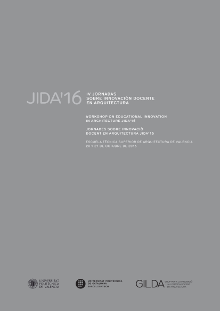Camerabeing: (Un) Making the Inside
DOI:
https://doi.org/10.5821/jida.2016.5116Abstract
In the academic framework of the teaching of architectural projects, this article discusses the relevance of studying the historical and social significance of the emergence -in the second half of the nineteenth century and early twentieth century- of new techniques for the production of images that transform perception, the medias: photography and cinematography. The camera becomes an organ of vision or prosthetic eye. From the origins of photography, figures like Baudelaire are critical to its usefulness. Later, Benjamin, utilises film to establish key concepts for understanding the contemporary perception -the montage, the dialectical image, shock, etc.-. In this framework, it is possible to rethink with a critical attitude an architecture that redefines itself with time, and figures as Le Corbusier and Koolhaas exemplify, from production to reproduction, they pose transfers between disciplines. It demonstrates its own usefulness for the teaching of architectural projects.View DOI information in DOIBoard Crossref (by UPC)






















